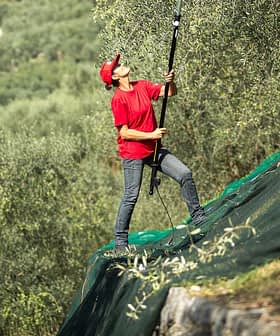There are a few reasons we don’t reveal the scores our judges attribute to entries in the NYIOOC World Olive Oil Competition, but it boils down to the fact that they shouldn’t be interpreted at face value.
Let’s admit it. One taster’s 84 is another’s 86. A judge might assign higher scores earlier in the tasting than later in the morning. Some might lean toward certain sensory characteristics than others do.
They are renowned experts who form a panel representing the ultimate means to determine extra virgin olive oil quality. But they are human.
A few years ago, I decided to discontinue the Best in Class Award at the NYIOOC – which was bestowed on entries with the highest score in their respective category– due to my conviction that the scores are not sufficiently precise to make that call. One excellent olive oil shouldn’t be declared “better” than another excellent olive oil.
(Some enterprising folks nevertheless felt a need to build a ranking based on how many awards from various competitions a brand garnered in a given year as if that measured anything but the companies’ promotional budgets. But the websites for those rankings get almost no traffic according to metrics tools, revealing that the public doesn’t care more than I do.)
In our contest, scores are used only to determine if an oil earns an award or not – and whether it’s a Silver or Gold, and I’m not crazy about that either.
One entry could get a score of 79.8 to earn a Silver, while another gets 80.1 to win Gold. If it is tasted again a few minutes later, the results might edge the other way around.
Olive oil competitions are imperfect, but they are the most effective way to recognize producers for their heroics and educate the public on quality and value (though plenty of olive oil competitions do neither of those things).
The hidden scores I alone can see don’t mean much on their own, but patterns might emerge when we zoom out to nine years of data we’ve collected in what amounts to the most comprehensive sensory analysis of the world’s olive oils.
Like it or love it.
Among the award-winning oils, which monovarietals made tasters swoon?
When analyzing an entry, NYIOOC judges use the software we developed that prompts them to attribute sub-scores to individual components that make up the overall result.
Things like gustatory and olfactory sensations, balance and harmony, fruitiness, bitterness and pungency contribute to the final number.
When a score reaches the 90s, it’s fair to say a beautiful oil blew the panel away. Scores in the low 70s barely made the cutoff.
Here are the average scores of award-winning oils for the most common cultivars over the last nine years. I also included the average score for award-winning blends:
Of course, we have much more data for Picual, Arbequina and Koroneiki than for Casaliva or Tonda Iblea. Here are only the cultivars I felt had enough results to produce a meaningful average. More than 200 varieties with smaller samplings were omitted.
A correctly crafted oil will consistently achieve better results than one with problematic sensory characteristics, no matter the variety.
It also needs to be said that some cultivars are more limited to regions with less variability in factors like terroir, production methods, and quality standards than, for example, Arbequina, which grows worldwide.
Maybe the graph reveals specific cultivars that, with the right conditions and skilled producers, more consistently show signs of greatness.
Or, perhaps the data suggests some varieties with sensory characteristics that judges have yet to appreciate fully.









